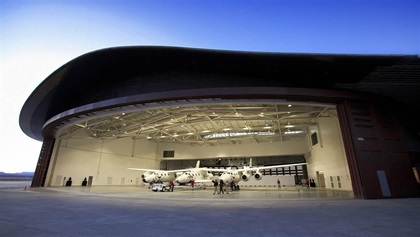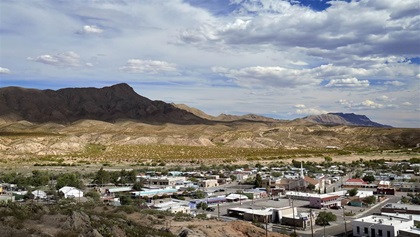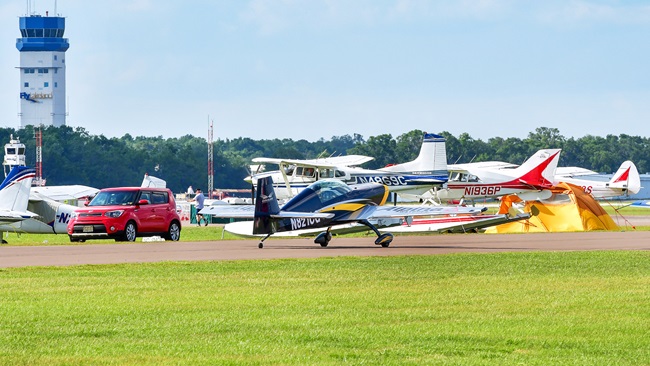This is Spaceport America
A new space age is dawning

The spaceline staff and vehicles will begin moving to the site this fall. Some 100 staff members and their families will relocate to New Mexico, and the purpose-built hangar in the 100,000-square-foot facility will house two WhiteKnight carrier spacecraft and five spaceships. Virgin Galactic will occupy 84,000 square feet of the massive “Gateway to Space”—including operations staff, pilots, flight crews, and the spacecraft—as the facility’s anchor tenant, while Virgin Galactic’s The Spaceship Company—the designer and manufacturer of the spacecraft—remains in Mojave building the fleet. Other Spaceport America tenants will include SpaceX, Up Aerospace, Exos Aerospace, and Pipeline2Space.
“This is the moment we’ve been working toward for a long time,” said George Whitesides, chief executive officer of Virgin Galactic. “We are very excited to get to it.”
A long and winding road
The anticipation I am feeling about finally seeing Spaceport America is palpable and I am annoying photographer Mike Fizer as we speed along a desolate two-lane road from Truth or Consequences, New Mexico, to the site. There is nothing here save for a lonely railroad track and empty railcars. We rattle over cattle crossings and do not pass another vehicle for the 45-minute drive. Why I am so excited is questionable; after all, I am not someone who has ever desired to go to space. But 50 years after the first moon landing, which I like so many watched with my parents in our living room on a black-and-white television set, to think that in my lifetime I am seeing the home of a new space age is cause for excitement.
Branson himself said he remembered watching the lunar landing at home with his parents and sisters in their “pajamas and dressing gowns,” and it was this experience that instilled his “childlike wonder” and awe of space. Like Branson, this was a life-changing moment for me and so many (although my father most assuredly did not have a dressing gown).
The other-worldly view of Spaceport America that many photographers have captured since it was completed in 2016 does not disappoint. The aerial images that I have seen remind me of a horseshoe crab, so when one of my first questions to New Mexico Director of Site Operations Chris Lopez is what the design is based on, his cryptic answer of “think human biology” stumps me. And he makes me wait for his answer.

The Rocketeers




Waiting is something New Mexicans are used to. That the much-anticipated Spaceport America has sat somewhat empty for many years isn’t a surprise for the residents. But when you’re coming up nearly last in state rankings for education and have a struggling economy, the promise of Spaceport—and a $31 million investment (total cost $200 million)—is fraught with anticipation and hope.
Lopez is a native New Mexican. He calls himself a “boomerang” in that he left the state to pursue a career but came back to raise his family here. His varied background in sales, real estate, and semiconductor development is well-suited to run the site operations. “It’s all dirt,” he said.
Lopez gets almost spiritual when discussing Spaceport America: “This is the next journey for technology. Automobiles, computers, or the internet—those are all transformative technologies. Commercial space travel is going to be that next transformative technology that’s going to affect our world and us as a species in ways we can’t even imagine today,” he said. “It’s also the possibilities and more opportunities for our children. This is a step to a brighter future, not only for New Mexico but for all inhabitants of this Spaceship Earth we live on.”
As for the “human biology” component of the winning design in the international competition to design Spaceport America? Foster + Partners U.K. used the inspiration of the human eye. Virgin Galactic also employs the eye in its logo. “We’re all looking to the future,” Lopez said.
‘Is that a tarantula?’
Site selection for Spaceport America took nearly 15 years and one of the interesting facets of this area of New Mexico is that it is on the El Camino Real. This 100-mile shortcut across the desert is part of the oldest and at one time the longest “highway” in North America. The first Europeans arrived in New Mexico in 1598, 22 years before the pilgrims landed at Plymouth Rock. The security guard at Spaceport America tells us this when we arrive to illustrate that this area has been a hub of transportation for centuries—and that this new transportation center is just another step along its history.
Situated between the Caballo Mountains to the west and the San Andres Mountains to the east, Spaceport America is adjacent to the U.S. Army White Sands Missile Range. This affords 6,000 square miles of protected airspace for the research, flights, and experiments at Spaceport. The facility and its Space Operations Center, which houses the administrative, safety, and security arm of Spaceport, sits on 18,000 acres. The runway is 12,000 feet long and the vertical launch pad is located five miles from the terminal hangar facility. Virgin Galactic leases the three-story building from the state of New Mexico. The company has a 20-year lease.
 At the entryway is a Virgin Galactic spaceship and the U-shaped Unity sculpture. After passing through the security gates, a half-mile-long road leads up to the Gateway to Space (New Mexico’s name for the terminal hangar facility). Side roads have names such as Launch Loop, Milky Way, and Asteroid Loop. The building itself is low lying with a natural earthen berm. At the end of the entry road is a parking circle and from there one can stroll up “Astronaut Walk,” a deep brown channel cut through the building. At the top, the 10-percent-incline path appears to end in nothingness—a brown, circular end of the road.
At the entryway is a Virgin Galactic spaceship and the U-shaped Unity sculpture. After passing through the security gates, a half-mile-long road leads up to the Gateway to Space (New Mexico’s name for the terminal hangar facility). Side roads have names such as Launch Loop, Milky Way, and Asteroid Loop. The building itself is low lying with a natural earthen berm. At the end of the entry road is a parking circle and from there one can stroll up “Astronaut Walk,” a deep brown channel cut through the building. At the top, the 10-percent-incline path appears to end in nothingness—a brown, circular end of the road.
 As we stand in the 109-degree-Fahrenheit heat, Lopez starts to explain why he’s brought us here but then exclaims, “Is that a tarantula?” And, sure enough, there’s a very dead (thank God), two-inch-round, black hairy spider sitting in front of what turns out to be one of three hidden doors. That door leads into Virgin Galactic’s headquarters (we can’t go there), the center door leads to the three-story-high hangar (can’t go there either), and the third door leads to the Experience Gallery, the visitor’s center for the Gateway building. Here are interactive exhibits and a G-shock trainer. We can view the hangar from here—and it is massive—but cannot take photographs because of the top-secret and intense activity of Virgin Galactic’s moving-in staff.
As we stand in the 109-degree-Fahrenheit heat, Lopez starts to explain why he’s brought us here but then exclaims, “Is that a tarantula?” And, sure enough, there’s a very dead (thank God), two-inch-round, black hairy spider sitting in front of what turns out to be one of three hidden doors. That door leads into Virgin Galactic’s headquarters (we can’t go there), the center door leads to the three-story-high hangar (can’t go there either), and the third door leads to the Experience Gallery, the visitor’s center for the Gateway building. Here are interactive exhibits and a G-shock trainer. We can view the hangar from here—and it is massive—but cannot take photographs because of the top-secret and intense activity of Virgin Galactic’s moving-in staff.
Also on the site is a fuel farm, warehouse, and the largest fire and emergency response team in this New Mexico county of 15,000 residents. Rolf Hechler leads the team from Fiore Industries, subcontracted for Spaceport by the state of New Mexico. He leads 16 firefighters and 13 security guards on site. Hechler shares a reverence for the work here. “This is a wonderful opportunity to support the making of history,” he said. “We are a small part of ensuring the safety of what has been slow in coming but is now upon us. We are training daily in anticipation of seeing the space launch.”
Or, as New Mexico Gov. Michelle Lujan Grisham said at the May 10 announcement: “How cool is this?”
Email [email protected]
View a graphic depiction of Spaceport America.



